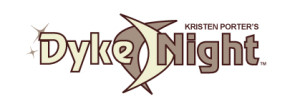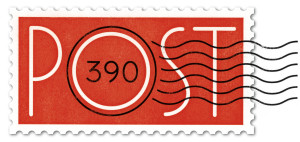History
A GAY DATE WITH HISTORY
by Andrew Elder, for The History Project: Documenting GLBT Boston.
George Mansour has been booking film in Boston-area movie theaters for 46 years. In the early 1980s, in addition to booking films for more mainstream commercial and art movie houses like the Orson Welles in Cambridge and the Nickelodeon just outside Kenmore Square, Mansour booked films for the South Station Cinema, a gay porn house in Boston. His work for the South Station Cinema, Mansour told The History Project in a 2010 interview, was the catalyst for what would become the Boston LGBT Film Festival. “Every once in a while,” according to Mansour, “there would be a crackdown on porn in Boston … and we had to change what was being shown. All of a sudden, instead of something like Left Handed [director Jack Deveau’s 1972 gay adult film], [we’d feature] Show Boat with Irene Dunn or Glenda Jackson in Sunday Bloody Sunday.”
These movies were “vaguely gay-oriented,” though Mansour is quick to note that no one in the audience really seemed to care. “The movie-house didn’t survive on what was being played,” he said, “It survived on what was going on in the audience and the men’s room.”
Why start an LGBT film festival?
For years, community members expressed an interest in seeing serious LGBT-oriented film in Boston—though outside of a porn house setting such as the South Station Cinema.
“I was booking the Nickelodeon at the time,” remembers Mansour about that first festival he organized in 1984. “I suggested [organizing the festival] to my client, who was not gay and was not necessarily interested in doing anything pro-gay.” Nevertheless, the festival was given the green light.
The Boston Premier Gay Film Festival—as it was known in 1984—was the first time an LGBT-themed film series was featured at a commercial theater in the city. The festival met with relative success, says Mansour, and another was scheduled for the following year.
Relocating the Festival
Over the years, the festival was not without controversy. Recalling the reason for the move in 1989 to a different theater—the Somerville Theatre in Davis Square—Mansour told The History Project: “The festival, unwisely I suppose, used [a promotional image] for the festival that was slightly provocative. It was a close up of a male Levis with the fly starting to be opened [and] the Nickelodeon got nervous.” The festival was scheduled—as in previous years, though unintentionally—to coincide with an annual alumni meeting at the neighboring Boston University. “[The Nickelodeon] pulled the plug at the last minute, so I transferred the festival to … Somerville.”
After a brief stint in Davis Square, the festival moved in 1990 to the Institute of Contemporary Art (ICA), then located near the Hynes Convention Center in Boston’s Back Bay. The festival at the ICA coincided with the museum’s Robert Mapplethorpe exhibition and was, recalls Mansour, “terrifically successful.”
“The Mapplethorpe was the big draw, but the fact that there was a gay and lesbian film festival at the same time was very good. [The ICA] had never had such crowds.” After the ICA, the festival moved to the Harvard Film Archive in Cambridge. It was at this time that the festival first became connected with Boston’s Museum of Fine Arts when several films deemed “too risqué” by the Harvard Film Archive were shown there. Since the early 1990s, the MFA has been one of the primary homes of New England’s largest LGBT film festival.
Gay film? What’s a gay film?
In 1984, for his coverage of the festival for Gay Community News, Michael Bronski tried to answer this question: “The films at the Nickelodeon Gay Film Festival are about gay characters, some are made by gay directors and others have an appeal to gay audiences either because of their approach or their sensibility. To judge by this festival, gay film is any film which might appeal to gay people as a group, for whatever reason.” According to Mansour, finding appropriate films for an LGBT-themed festival was no small feat in 1984. “There weren’t many ‘gay films,’” Mansour recalls, and so he mined older Hollywood films, as well as new theatrical releases, looking for anything with a gay subtext. Early festival films ranged from works by Jean Genet and John Waters, to an adaptation of Gore Vidal’s Myra Breckenridge, to the 1932 Clara Bow film Call Her Savage, a film that, according to Bronski, “features the first gay bar scene in a Hollywood movie.”
The festival also included a number of notable firsts. “The gay and lesbian film festival,” says Mansour, “was the first place that Gus Van Sant’s Mala Noche ever played. It played first at the Nickelodeon and nobody even bothered to review it. Then I put it into the festival that was in Davis Square, and again nobody paid any attention to it. But then, when the festival was at the ICA, [Van Sant’s] Drugstore Cowboy had come out.” When Mansour double-billed the film with Drugstore Cowboy, Mala Noche was suddenly a huge success among Boston movie critics.
Mansour also had a problem, early on, finding lesbian-themed films to include in the festival. “There just weren’t many lesbian movies” at the time, noted Mansour. One of the films Mansour located that had a strong lesbian subtext was the 1980 feature Richard’s Things, starring Liv Ullman. Remembering that the film “hadn’t had much distribution at all,” Mansour included the film in the festival.
Many of the films included in those earlier festivals were revisited Hollywood films with a lesbian or gay subtext or films by LGBT directors, or starring LGBT actors. “They were the kind of [films] that you had to excavate and put in a gay framework because they weren’t explicit. But they were, as far as I was considered, gay.”
“We played The Private Files of J. Edgar Hoover, which was a hoot! Which was absolutely hilarious!”







